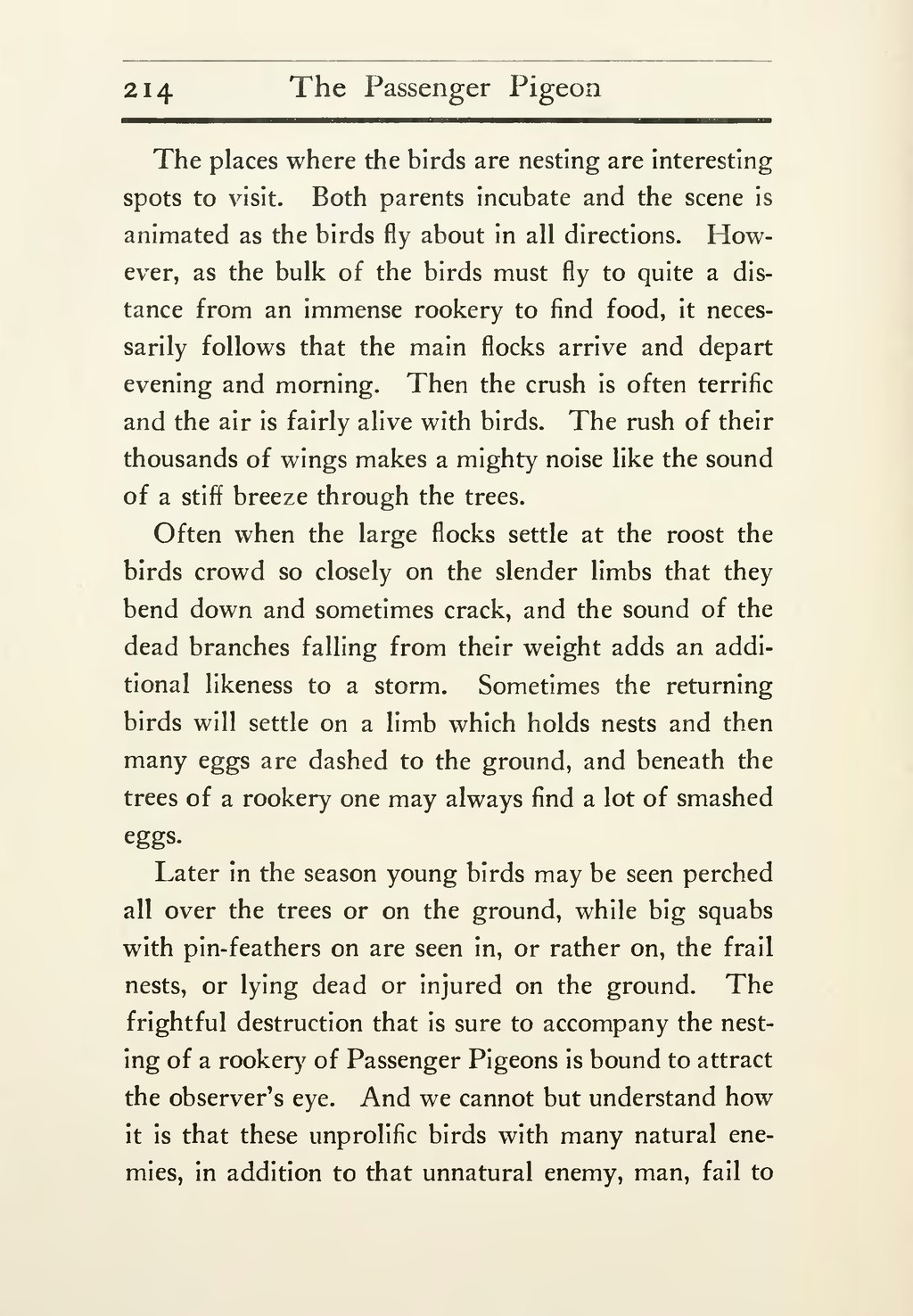The places where the birds are nesting are interesting spots to visit. Both parents incubate and the scene is animated as the birds fly about in all directions. However, as the bulk of the birds must fly to quite a distance from an immense rookery to find food, it necessarily follows that the main flocks arrive and depart evening and morning. Then the crush is often terrific and the air is fairly alive with birds. The rush of their thousands of wings makes a mighty noise like the sound of a stiff breeze through the trees.
Often when the large flocks settle at the roost the birds crowd so closely on the slender limbs that they bend down and sometimes crack, and the sound of the dead branches falling from their weight adds an additional likeness to a storm. Sometimes the returning birds will settle on a limb which holds nests and then many eggs are dashed to the ground, and beneath the trees of a rookery one may always find a lot of smashed eggs.
Later in the season young birds may be seen perched all over the trees or on the ground, while big squabs with pin-feathers on are seen in, or rather on, the frail nests, or lying dead or injured on the ground. The frightful destruction that is sure to accompany the nesting of a rookery of Passenger Pigeons is bound to attract the observer's eye. And we cannot but understand how it is that these unprolific birds with many natural enemies, in addition to that unnatural enemy, man, fail to
